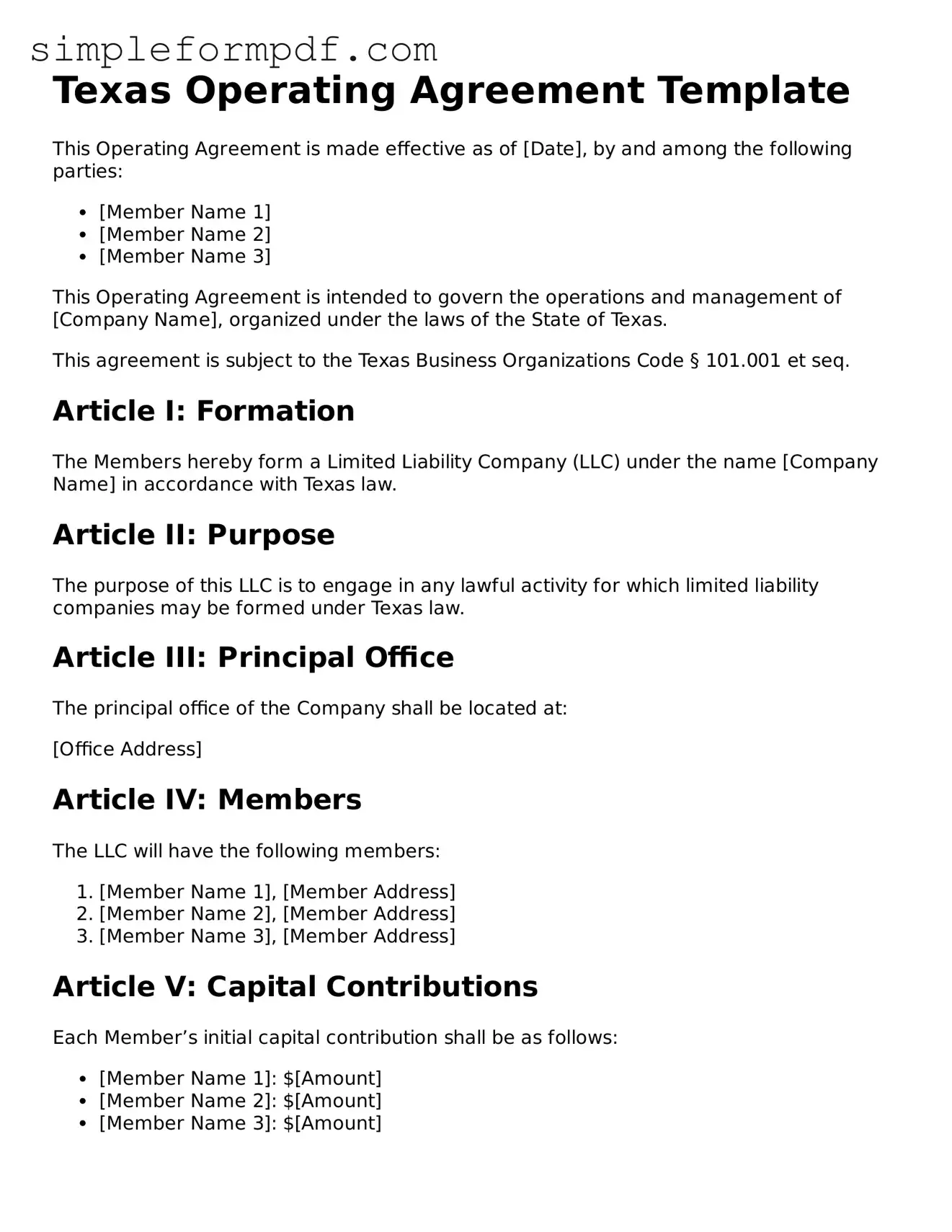Texas Operating Agreement Template
This Operating Agreement is made effective as of [Date], by and among the following parties:
- [Member Name 1]
- [Member Name 2]
- [Member Name 3]
This Operating Agreement is intended to govern the operations and management of [Company Name], organized under the laws of the State of Texas.
This agreement is subject to the Texas Business Organizations Code § 101.001 et seq.
Article I: Formation
The Members hereby form a Limited Liability Company (LLC) under the name [Company Name] in accordance with Texas law.
Article II: Purpose
The purpose of this LLC is to engage in any lawful activity for which limited liability companies may be formed under Texas law.
Article III: Principal Office
The principal office of the Company shall be located at:
[Office Address]
Article IV: Members
The LLC will have the following members:
- [Member Name 1], [Member Address]
- [Member Name 2], [Member Address]
- [Member Name 3], [Member Address]
Article V: Capital Contributions
Each Member’s initial capital contribution shall be as follows:
- [Member Name 1]: $[Amount]
- [Member Name 2]: $[Amount]
- [Member Name 3]: $[Amount]
Article VI: Management
The management of this LLC shall be vested in:
- Members managed: All Members will have equal rights to manage the company.
- Manager managed: Designated Manager: [Manager Name] will manage the company.
Article VII: Voting Rights
Each Member shall have voting rights in accordance with their percentage of ownership interests in the company.
Article VIII: Distributions
Distributions shall be made to Members in proportion to their respective ownership interests at the times determined by the Members.
Article IX: Amendment
This Operating Agreement may be amended only by a written agreement signed by all Members.
Article X: Governing Law
This Agreement shall be governed by and construed in accordance with the laws of the State of Texas.
IN WITNESS WHEREOF, the Parties have executed this Operating Agreement as of the date first above written.
[Member Name 1] ___________________________ Date: __________
[Member Name 2] ___________________________ Date: __________
[Member Name 3] ___________________________ Date: __________
